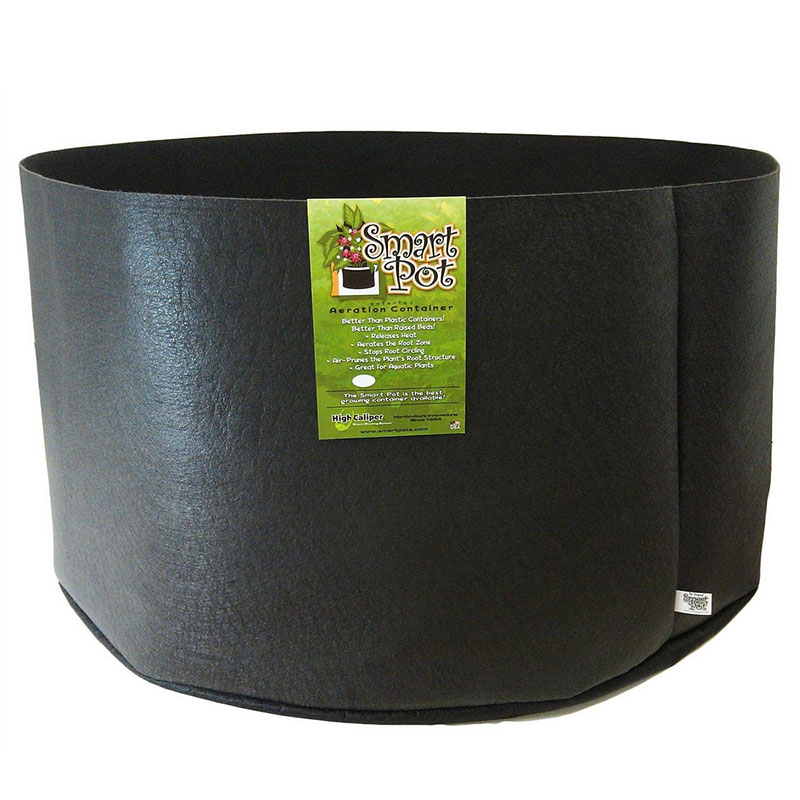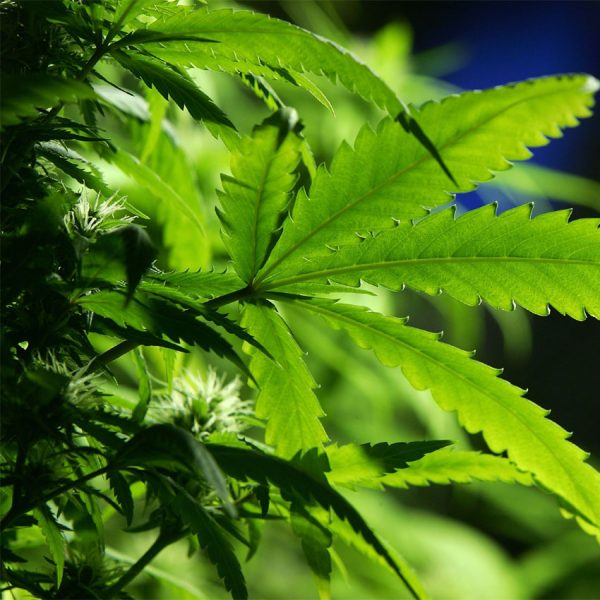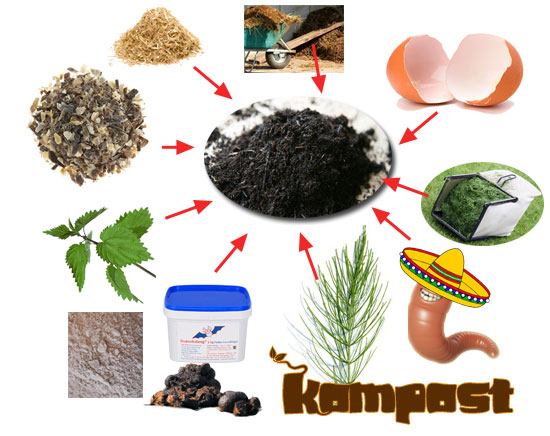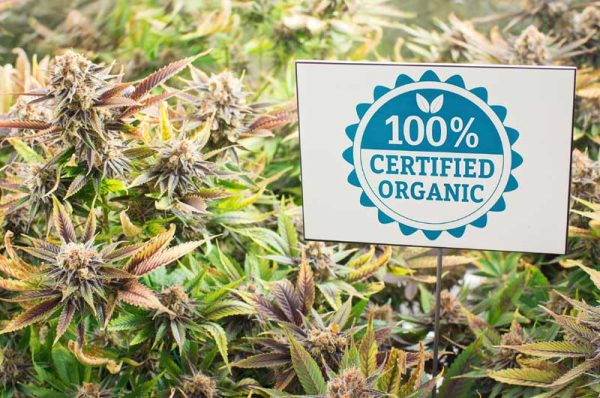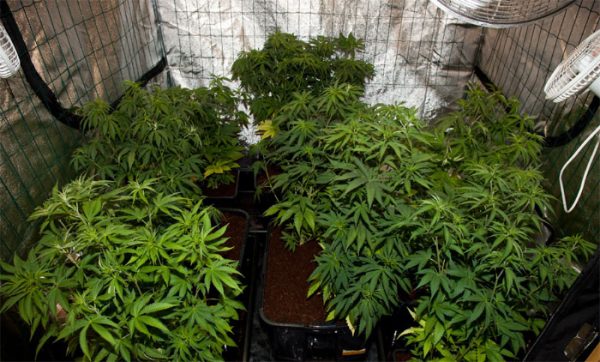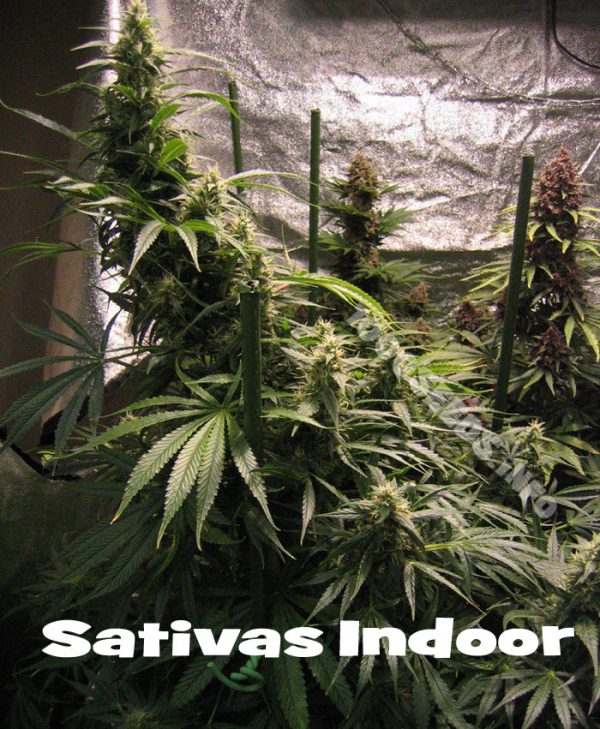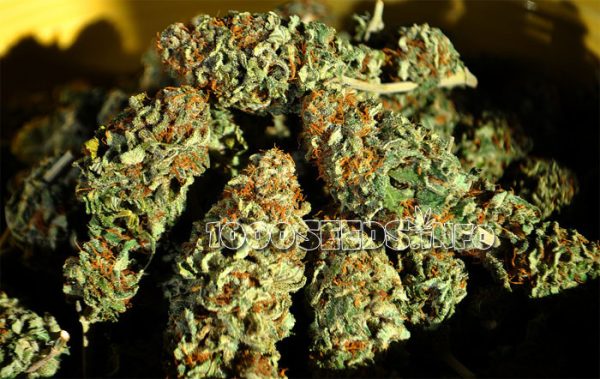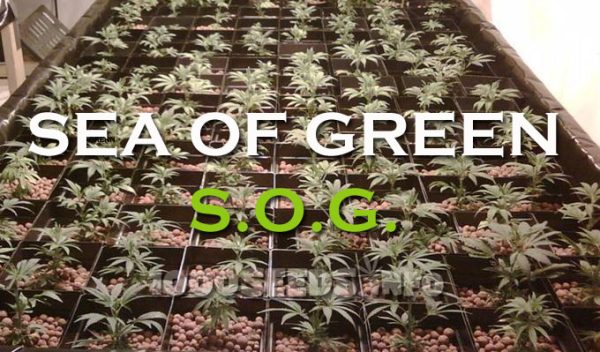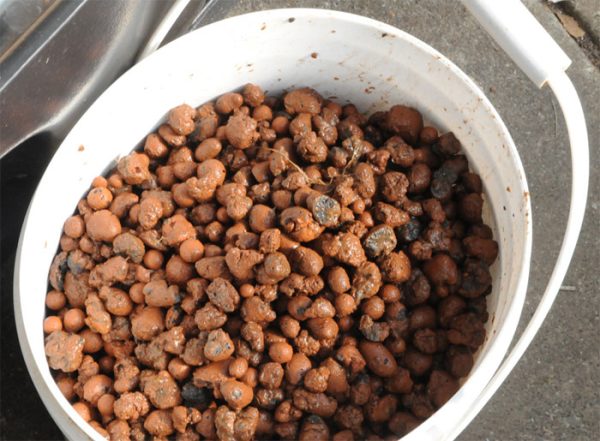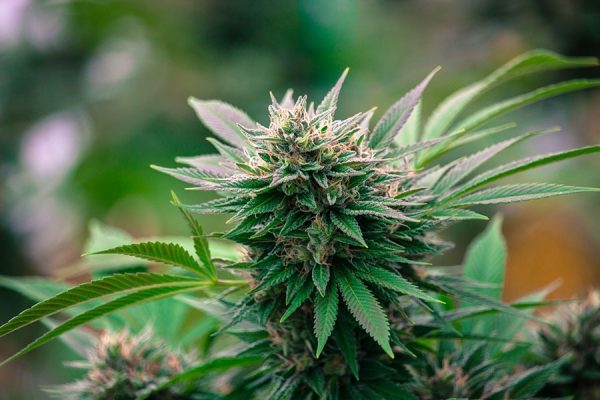Cannabis and root trimming - pruning roots properly
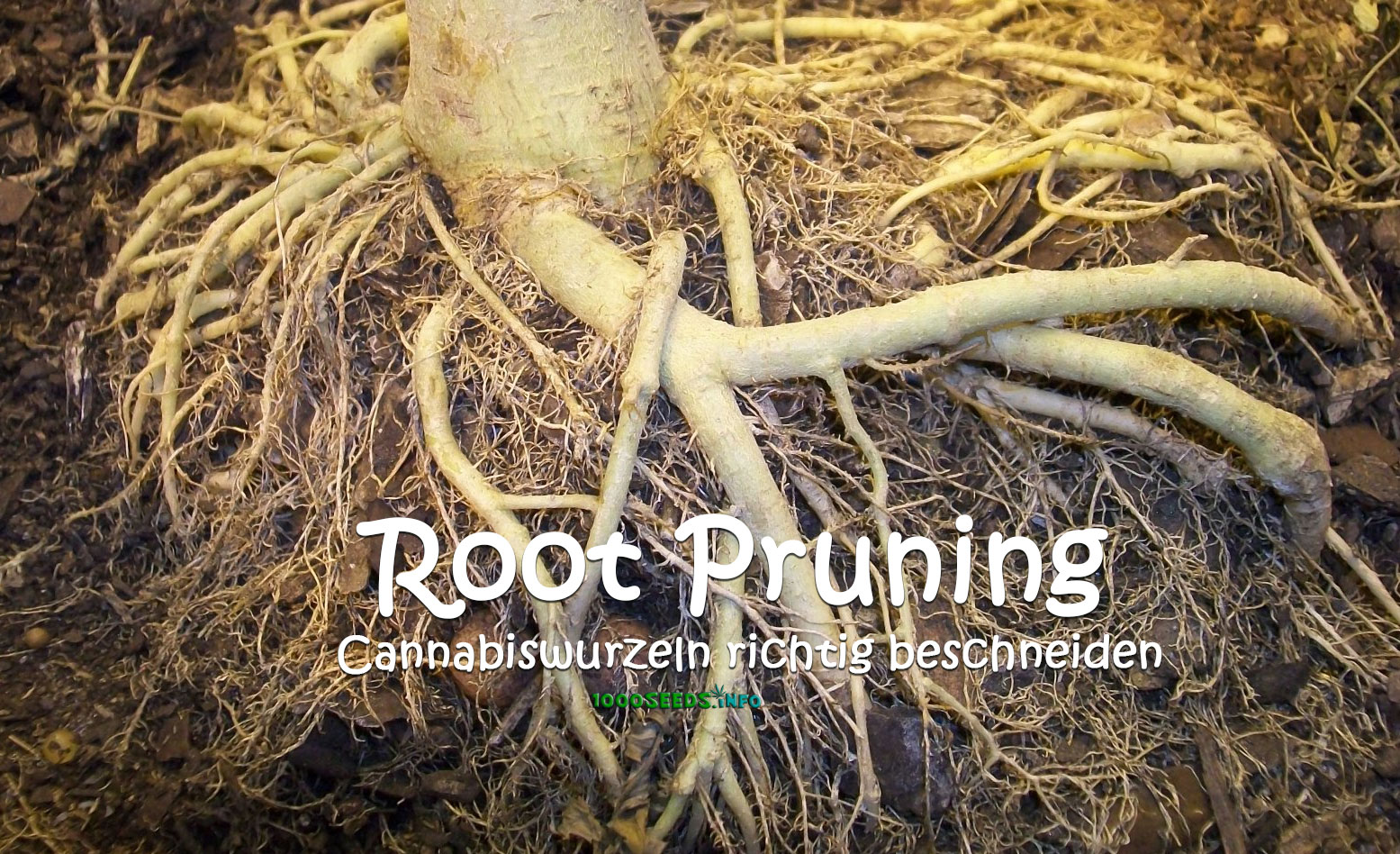
Root pruning is the trimming of the roots. What different methods there are, why it is done and what benefits you can get for your cannabis plants, you will learn here.
What exactly is root pruning?
As mentioned above, this is about pruning the roots of cannabis plants. In principle, it serves the same purpose as pruning young shoots or tying down the plants. As you surely know, this is done to achieve better growth of the cannabis plants and thus increased yields at harvest. The plants form new shoots and get more volume. It is similar with the roots.
You'll find more about the different methods below, but first let's take a look at why root pruning makes sense in the first place.
Roots in the wild

Let's first take a look at nature and how the root system behaves there. In the soil, the roots of the plants have enough space to spread. There are no limits, just like in a pot. Through evolution, a certain growth behaviour has developed. A root keeps growing until it can go no further. If it encounters an obstacle, it tries to grow around it. Only when it cannot go any further does it form new branches that continue to spread. These small root tips are responsible for nutrient uptake, while the thicker coarse roots ensure that the plants stand firmly. So for an outdoor grow without pots in the ground you don't need root pruning, it would only make sense when growing the plants. Besides, the roots always like to grow where it is cool and damp.
With this growth behaviour, it is easier to understand why it makes sense to deal with the topic when growing in pots, whether it is an indoor or outdoor grow. The space for the roots in the container is limited and with root pruning you can show them how they can best use the space for themselves.
The ring roots
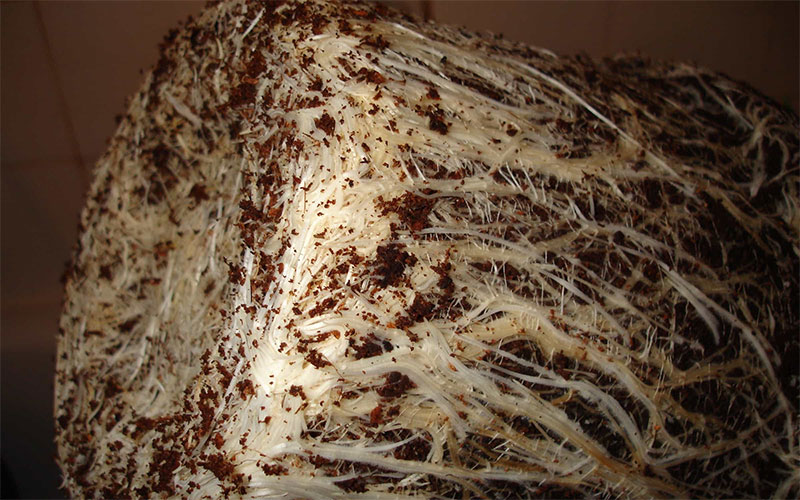
As you can probably imagine, the growth behaviour in pots is not necessarily ideal. As the root tries to grow around an obstacle, it also tries to grow around the pot wall. As a result, it winds its way further and further along the wall and forms so-called ring roots. These ring roots have several disadvantages for your plants. Since only the small fine roots at the top take up the water and nutrients, they have quite a long way to go with the ring roots. They also push themselves further and further to the outside and thus away from the nutrient medium. If the outdoor grow is exposed to sunlight, they also feel the heat and dry out more quickly. If the ring roots are very strong, they can even form a wall between the new and the old substrate when you repot your plants. In such a case, the coarse roots would have to be broken up or even cut off so that the rest can spread in the new medium.
So there are a lot of disadvantages that you can get from these roots. This is where root pruning comes in. By pruning the roots, we give them the opportunity to develop properly. Basically, we show the plant how much space it has available for its roots. You probably already know this principle from pruning small young shoots or tying them down to get more shoots on a plant. As I said, these methods are very similar.
Different types of pruning
Root pruning with the knife or scissors
There is the very simple method of removing the ring roots with a knife when repotting. With cannabis plants, this method should be used with caution, because it is stress for the plants. And the good grower knows: to harvest good Sensimilla, the stress level of the plants should be nice and low. If you see dead or very thick ring roots when repotting, you can remove them with clean disinfected scissors or a sharp knife. Sometimes this is unavoidable with plastic or clay pots. A thick root ball takes much longer to grow. This method is mainly used with mother plants that have a long life span and whose root zone grows very densely over time. Root trimming of mother plants can be a kind of rejuvenation cure if used correctly. Subsequently, no cuttings should be taken from the plant for 3-4 weeks. One should keep in mind: The part of the plant above the ground (branches, leaves) and the part of the plant below the ground (root zone) should always be in a similar and good ratio to each other in terms of volume.
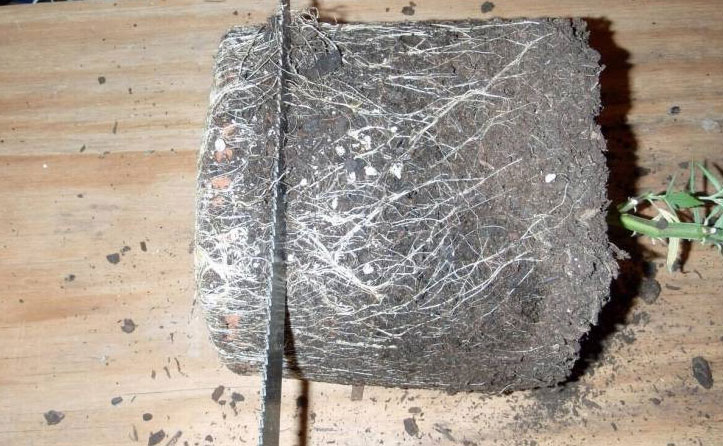
Two other methods have proven to be very promising for the cultivation of cannabis. These are air-pruning and root-trapping.
The Air-Pruning
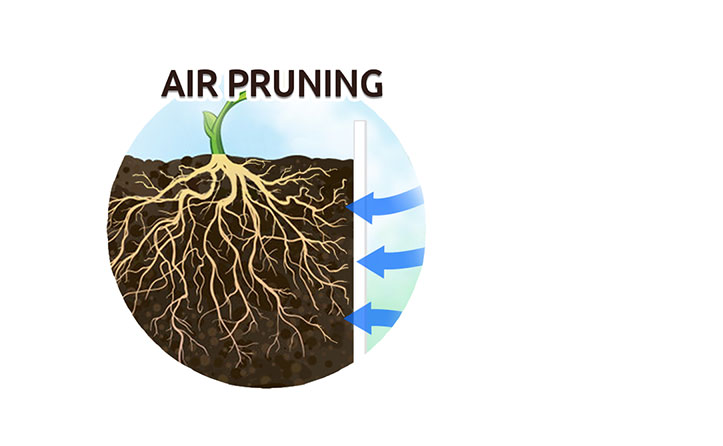
Air-Pruning is the pruning of roots with the help of air. If the tip of the root gets exposed to dry air, it stops growing and forms new shoots below the tip. They don't like sunlight and dry air, because this is also a sign for the roots that things are going nowhere. This is exactly what you can take advantage of with air-pruning. With certain pots, such as Air-Pots, Planter Ercole or Air-Max the roots get air from the side and branch out again. The whole pot is rooted very nicely and the important fine roots grow further into the nutrient medium. Again and again they branch out anew and thus penetrate the whole medium with fine roots.
One disadvantage, however, can be too much humidity. If it is dark and humid, the roots will continue to develop outside the pots. The drier the air, the more this method will work. Of course, this is easier to control and correct, especially indoors. When growing outdoors, it is best to think about the site conditions in advance.
The root trapping
Root trapping involves working with textile fabrics such as Smart Pot, Tex Pot or Root Pouch. The textile pots or bags are usually made from recycled materials. The principle remains the same, the root is shown that it cannot go any further here. When the tip hits the felt-like material, it is as if it were hitting another root ball in nature. For example, from a lawn ball or similar thick root system. Now the root stops growing long again and starts to form new shoots.
This method offers less stress to the roots, as they do not come into the dry air and die. So they are taught more gently that this is as far as they go. The stress is also limited with the first method.
The textile pots and bags are available in many different variations and sizes.
Advantages through root pruning
As you can imagine, root pruning can bring you many advantages. Even with the disadvantages that ring roots bring with them, some of the advantages are obvious.
- There are more fine roots and fewer coarse roots, so the plant is able to absorb more nutrients and water. The cannabis plants can develop better and thus logically deliver increased yields. Many coarse roots are not needed by the plant when growing in containers anyway.
- The growing time when repotting the plants is also shortened. As mentioned above, the ring roots can form real walls between the substrates. These first have to be loosened up, which again means stress for the plants.
- The roots can adapt to the container and are not exposed to the heat of the container rim like the ring roots.
- Both of the above methods of root pruning also have the advantage of ensuring good aeration of the substrate. For example, waterlogging is avoided, but more importantly, the soil becomes unattractive to dangerous fungal species and bacteria. The species we want for our cannabis plants, however, feel right at home there.
- Contrary to some fears, water does not simply run down the sides of dry soil. This is much more likely to happen in plastic pots with dry soil. Due to the good aeration, greater evaporation is also to be expected. In practice, however, this hardly makes a difference when watering the plant.
(However, you should still be a little more careful when fertilising. Due to evaporation, nutrients are more easily deposited. To avoid problems with overfertilisation, you should always be careful with your fertiliser solution anyway). - Mother plants also benefit greatly from these methods. Due to their long standing in the pots, they usually form strong ring roots. Even when repotting, there is hardly any interruption in the growth of the plants and thus new shoots for cuttings are produced more quickly. It is therefore not only worthwhile to use these methods for increased yields in the harvest, but also in the offspring.
- The time until repotting is necessary is extended due to the better growth behaviour of the roots. Just like the growing time just mentioned. The roots do not have to reorientate themselves or recover from pruning. They can grow directly into the new medium.
- The stress level for the cannabis plants is kept low. This can be an important factor for a high yield at harvest and to prevent the plants from hermiting. This is because hermaphrodite plants produce male pollen sacs and so the plant pollinates itself. For the harvest of good sensimilla (i.e. seed-free flowers), this is of course not good.
So there are a lot of advantages to root pruning.
Side-vented planters are not so popular for nothing and are used successfully by many growers. Textile planters and bags are also a more environmentally friendly alternative to plastic pots.
What do you have to consider when root pruning?
- Don't do root pruning if your plants are already under stress.
- When air-pruning, it is important to keep an eye on the humidity. If the air is too humid, even a good air-pot won't do much good and the roots will just keep growing.
- Root pruning should be done a maximum of 3 times a year for mother plants, and only once a year for regular plants during the whole cycle, mainly in the growing phase.
- Always use clean and disinfected scissors, knives and tools.
- Never remove more than 30% of the total root mass of a plant!
- Due to the better absorption of water and nutrients, more frequent watering may be necessary. In addition, as already mentioned, you should pay attention to your fertiliser solution and not overdo it. The topsoil can deteriorate enormously due to the deposition of salts and nutrients. Remember that the plant can now make better use of the nutrients that are already present in the topsoil. This means that it already has more nutrients available than before.
- As more fine roots and fewer coarse roots develop, it takes longer for the container to be rooted. So your old rhythm of repotting may change.
- The better utilisation of the medium allows you to better use smaller containers. The fine roots need less space than the large coarse roots and can absorb the nutrients better.
- There is also something to consider when choosing new containers. Whether you choose Tex-Pot/Smart Pots or Air-Pots/Air-Max is up to you. Some are of the opinion that the solid Air-Pots can be moved around better, and they are also more durable, as they are also made of plastic or similar materials. The textile planters can also last a few years until they start to slowly break down. Most can even be cleaned in the washing machine. For people with little space, however, Tex-Pots offer the advantage that they require little storage space and can be easily stored. Contrary to the fears of many, they also do not start to mould, because they also ensure good aeration of the substrate. Salt deposits on the outside can be easily removed again with a brush and by soaking in water.
- no root trimming 15 days before harvest!
If you grow automatic varieties or a Sea-Of-Green, the plants will not live that long, so root trimming would become necessary. For particularly robust plants with rapid root growth and a long growing season, or for mother plants, root trimming is a good way to keep the plants healthy and vigorous for a long time. If you are curious, try root pruning yourself. The end result will surely convince you.






